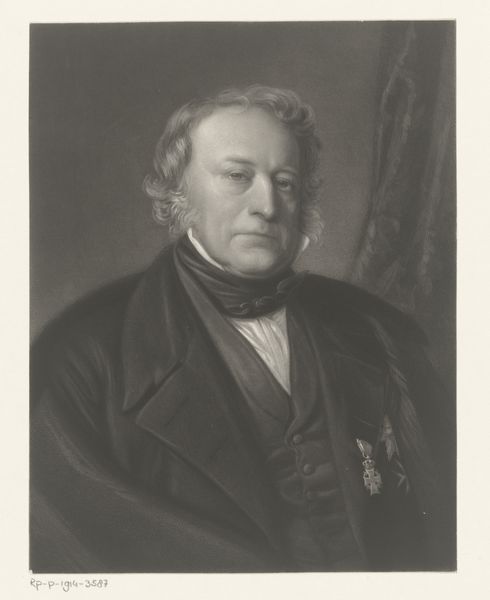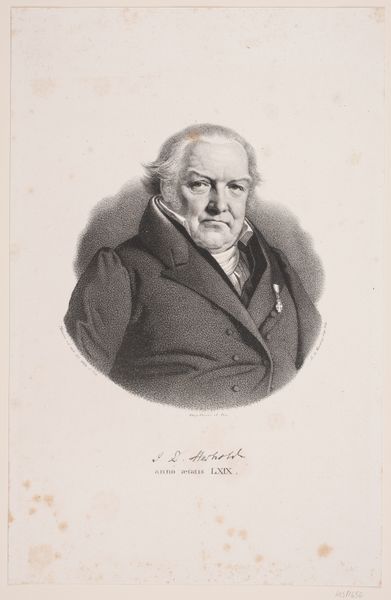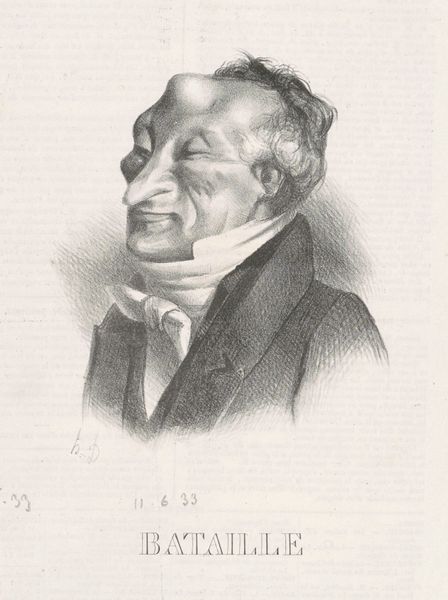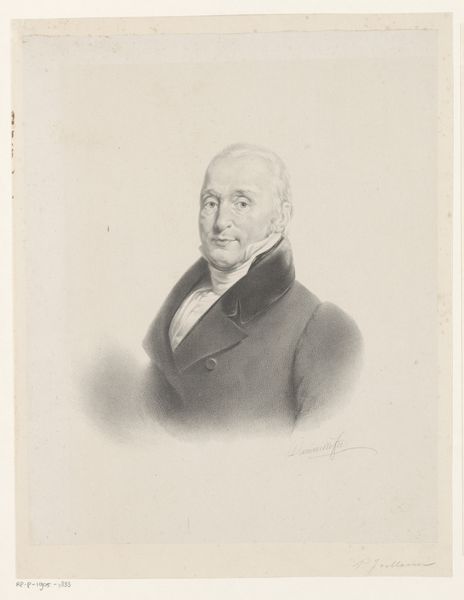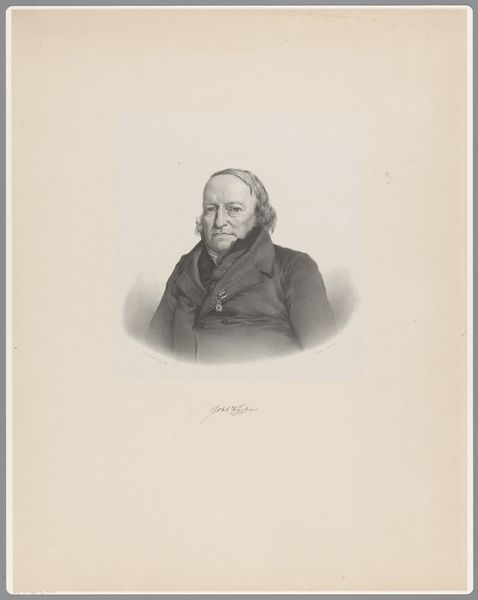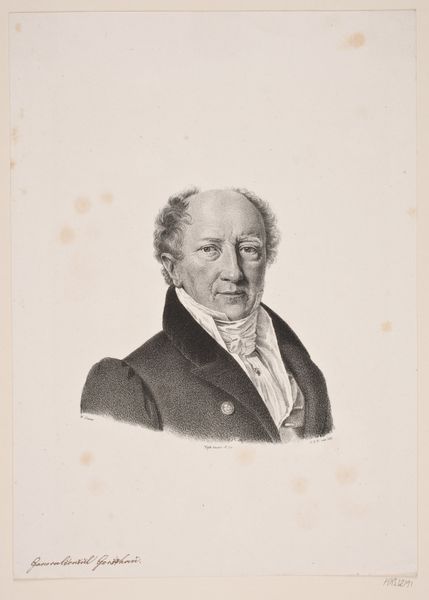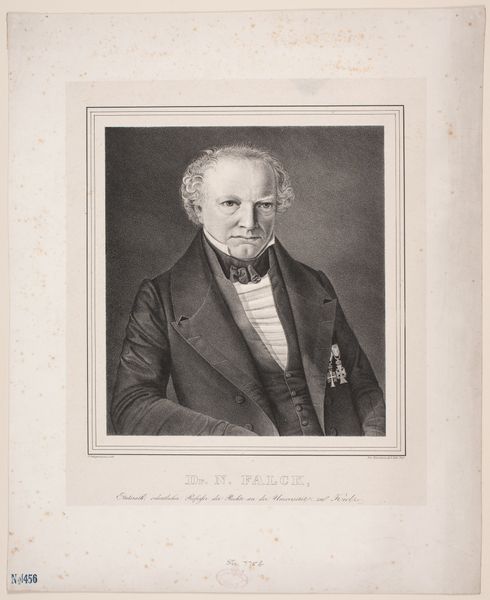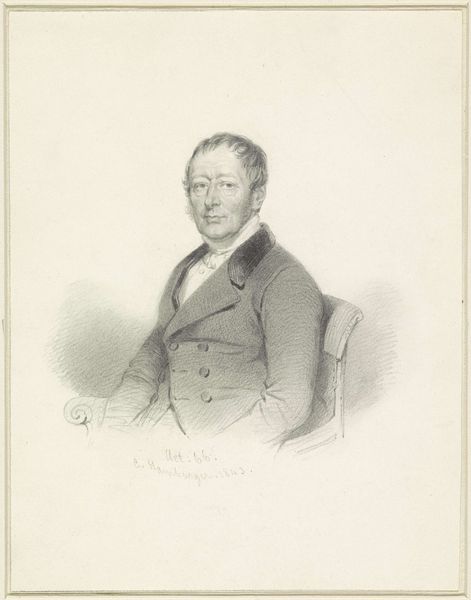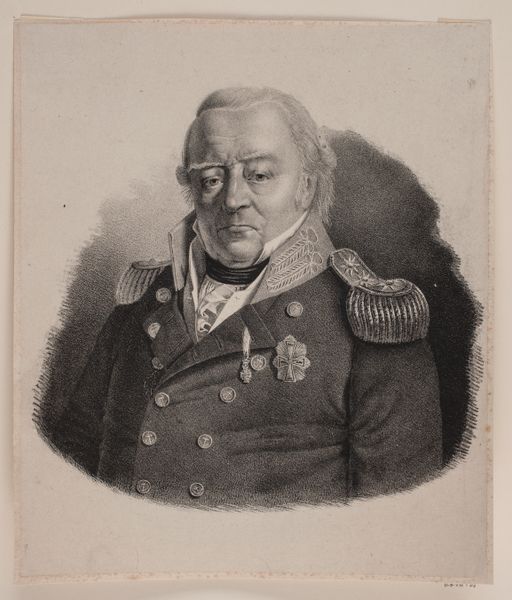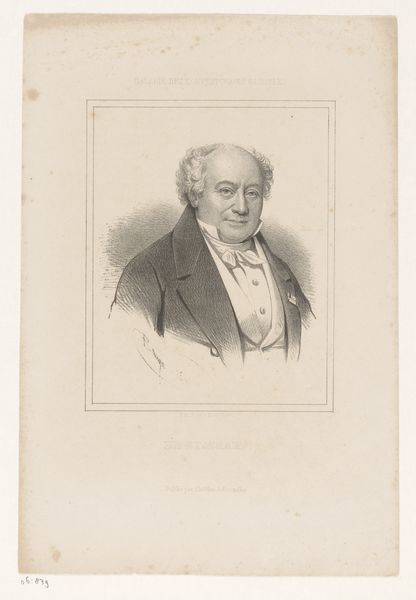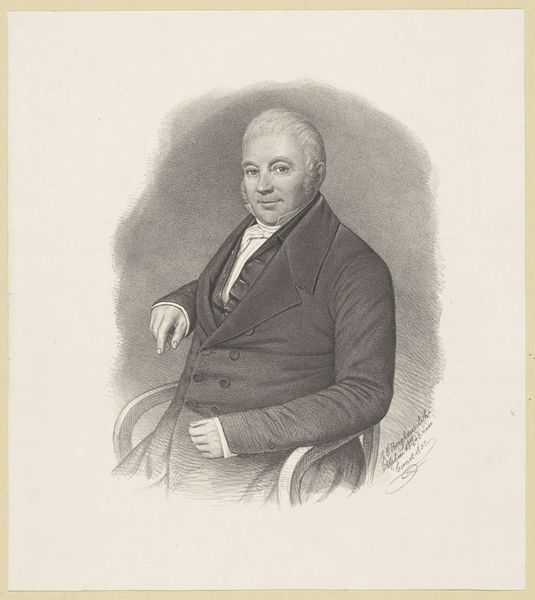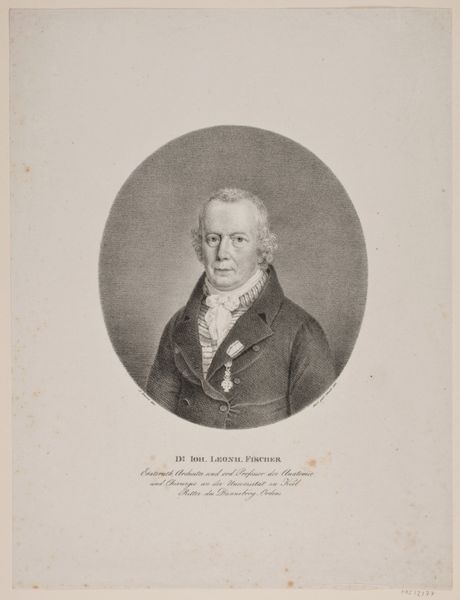
drawing, print, paper, engraving
#
portrait
#
drawing
# print
#
paper
#
romanticism
#
united-states
#
academic-art
#
engraving
#
realism
Dimensions: 102 × 91 mm (plate); 256 × 176 mm (sheet)
Copyright: Public Domain
Curator: This is Asher Brown Durand's engraving, "Aaron Ogden," created in 1834. It's currently housed here at the Art Institute of Chicago. Editor: The first thing that strikes me is the texture, achieved through engraving. It’s almost fabric-like, a detailed rendering of the sitter’s coat, juxtaposed against that subtle, gradated backdrop. Curator: The method is indeed integral to the portrait’s reception. Durand, active in the National Academy of Design, initially as an engraver, later excelled as a landscape painter. But prints such as this one facilitated broader distribution of likenesses, constructing and reinforcing societal power structures. The circulation of such imagery enabled wider participation within the cultural, political and commercial landscape. Editor: You see it in the mass production and the distribution… I see the meticulous control, the line work allowing such precision. The formality of his stance, the controlled pose... even in monochrome, there is volume, depth. I think of the conventions of the portrait genre—the gaze, the symbolic medal, and that carefully arranged cravat speak to an elevated social standing. Curator: But let’s also think about the economic forces behind portraiture. Durand needed to cater to a market. These commissions from wealthy merchants and political figures secured his livelihood and his place in the art world. We have to acknowledge the societal impact tied into the labor of artistic production. Editor: Yes, certainly. The commercial aspect does not diminish the aesthetic quality. Durand is consciously creating a lasting image, employing established visual strategies, that capture something, be it perceived or manufactured, about Ogden’s character. Curator: The layering of visual encoding—craft, economics and politics—constitute a more profound and durable cultural artifact, don't you think? Durand’s skill served as the cog in this grander process of value creation and cultural memory. Editor: I suppose, in seeing that cog at work so distinctly, allows an even greater appreciation for the individual’s work—not just in form but also concept, not simply what we see, but the how and why.
Comments
No comments
Be the first to comment and join the conversation on the ultimate creative platform.
